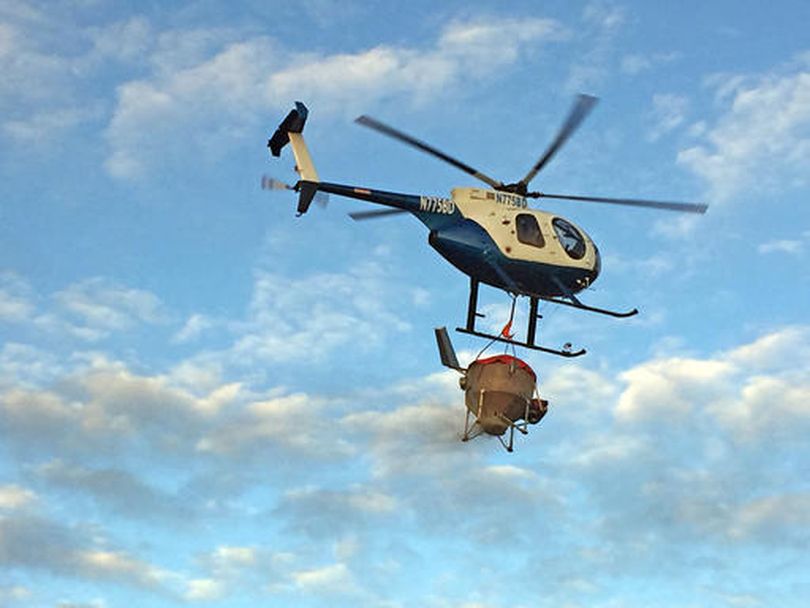Wildfire rehab effort going well so far in Idaho, Oregon

Scientists say a $67 million rehabilitation effort following a wildfire in southwest Idaho and southeast Oregon is starting off well, thanks to good precipitation over the winter, the AP reports. About $14 million has been spent since October - half of that for seed - as part of a five-year restoration plan to develop new strategies to combat increasingly destructive rangeland wildfires in the West. The Soda Fire burned 436 square miles of sagebrush steppe that supports cattle grazing and some 350 species of wildlife, including sage grouse; the restoration is aimed at finding ways to make the sagebrush steppe resistant to wildfire and more resilient should a wildfire occur. Here’s a full report from AP reporter Keith Ridler:
Wildfire rehab effort going well so far in Idaho, Oregon
By KEITH RIDLER, Associated Press
BOISE, Idaho (AP) — Scientists say a $67 million rehabilitation effort following a wildfire in southwest Idaho and southeast Oregon is starting off well thanks to good precipitation over the winter.
About $14 million has been spent since October as part of a five-year restoration plan to develop new strategies to combat increasingly destructive rangeland wildfires in the West.
"This fire occurred in an area that has a lot different terrain, different ecotypes," said Cindy Fritz, a natural resource specialist with the Boise District of the U.S. Bureau of Land Management. "There's a ton of variety out there and we'll be able to see how our treatments work."
She said about half of the $14 million has been spent on seed and the other half on labor and operating costs.
The new wildfire approach ordered by Interior Secretary Sally Jewell last year is credited with preventing many small rangeland wildfires from getting big. But the Soda Fire scorched 436 square miles of sagebrush steppe that supports cattle grazing and some 350 species of wildlife, including sage grouse.
Jewell's order calls for a "science-based" approach to safeguard greater sage grouse while contending with fires that have been especially destructive in the Great Basin. The bird did not receive federal protections under the Endangered Species Act last fall, but various efforts to protect sage grouse habitat have been put in place.
Part of that effort is making sagebrush steppe resistant to wildfire and more resilient should a wildfire occur. On-the-ground specifics of how to actually achieve those goals are being tested in the areas scorched by the Soda Fire.
Among the notable difference with the current wildfire rehabilitation compared to previous efforts, scientists say, is that the plan is five years rather than three.
Another change is that the plan is adaptive, meaning that if restoration efforts appear to be failing in some portion of the burned area managers can go back in with another effort, such as planting native vegetation.
The BLM has also partnered with the U.S. Geological Survey to see what works. Some 2,000 sample monitoring plots are being tracked to measure results of techniques that could become templates for future wildfire rehabilitation efforts.
"We've devised a new approach to monitoring that has more sampling rigor in terms of design and the intensity of sampling," said USGS research ecologist Matt Germino, who specializes in sagebrush ecosystems and is working on the Soda Fire rehabilitation.
The process includes re-treatment triggers if rehabilitation efforts are failing, continued monitoring of areas doing well to make sure progress continues, and monitoring to determine when cattle grazing can return. Experts say returning cattle too soon could hinder rehabilitation efforts.
Another significant change for Idaho is that a herbicide is being used that targets cheatgrass, a fire prone invasive annual that displaces native perennials with wildfire and part of the reason for the gigantic size of the Soda Fire.
